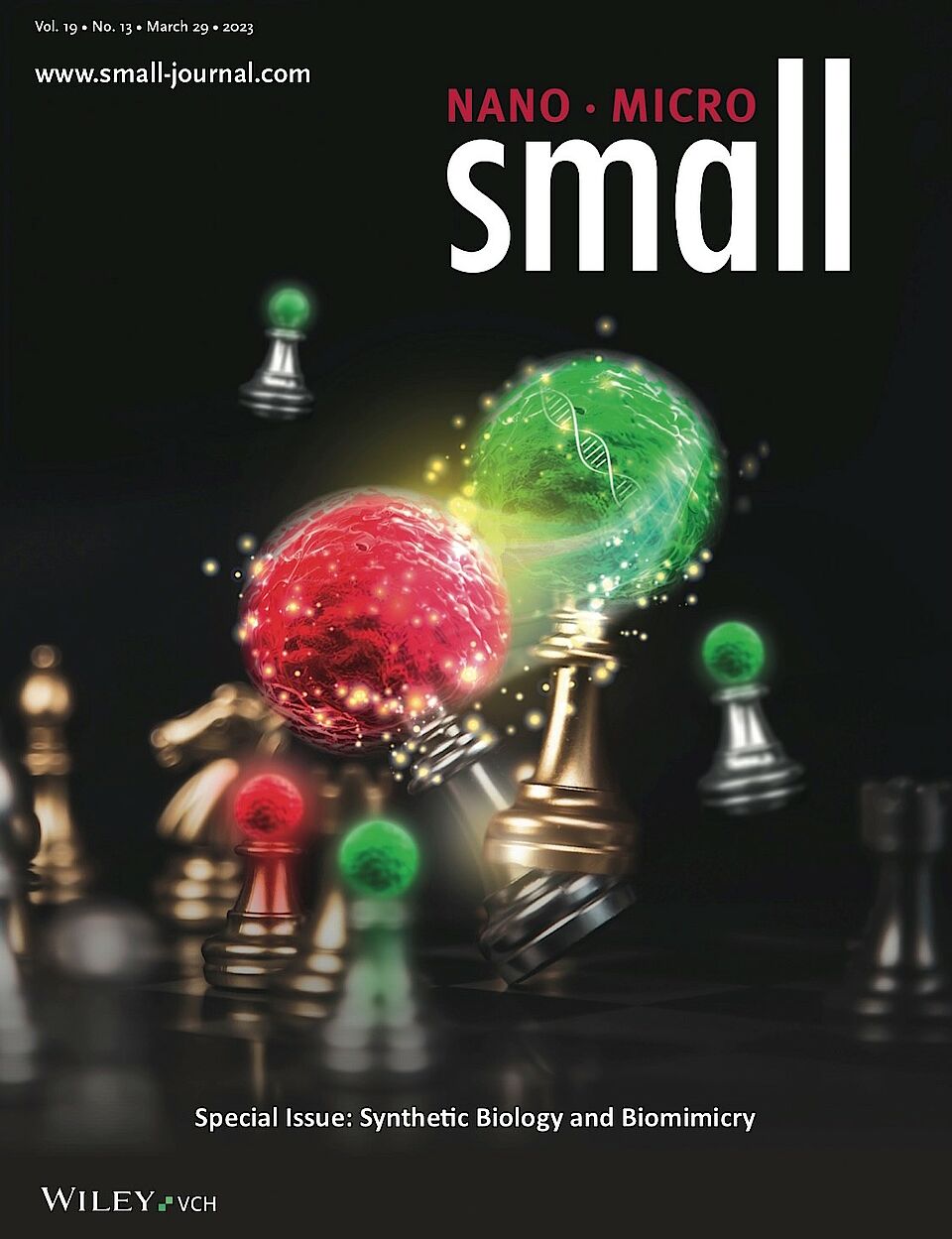Welcome to the Biointerfaces Group of Cornelia G. Palivan!
We study soft bio-hybrid materials resulting from the combination of biomolecules with synthetic assemblies at the nano- and micro-scale. The goal of our research is to probe and understand the relation between the components of bio-hybrid materials as well as the biointerface of such materials with cells or simple animal models. The main questions that guide our research are: How can biomolecules preserve their function in a synthetic environment? How to modify biomolecules to induce new functionality and how is this affected when a bio-hybrid material is designed? How to self-organize bio-hybrid assemblies in more complex architectures to provide multifunctionality? Which are the interactions of bio-hybrid materials with cells? How to produce a new bio-hybrid material with desired functionality for specific applications? Our interest extends from fundamental understanding at the molecular level of such bio-hybrid materials and associated biointerfaces to technological and medical applications.
Latest Publications
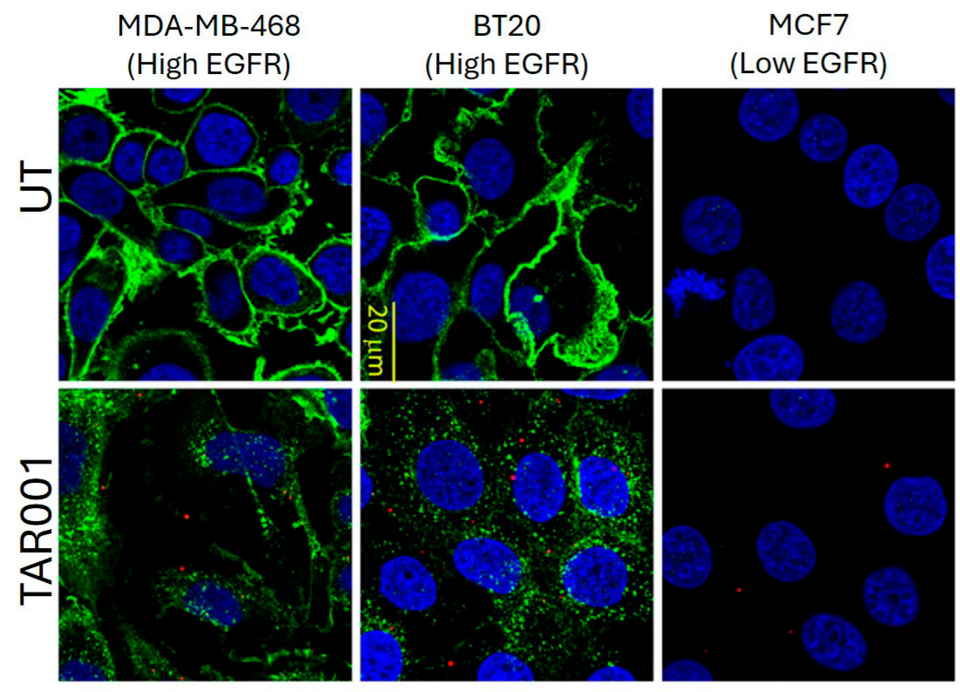
Targeted apoptotic immune modulator for the treatment of metastatic EGFR-positive solid tumors
D. Broka, S. Klein, Al. Shir, B. Schade, M. Saxena, A. Dasargyri, A. Jarzebinska , C. De Feyter, D. Bajic, D. Coleccia, L. d’Amico, E. Kitas, E. Hikri, M.J. Skowicki, M. J. Okoniewski, L. Baldino, B. Qeriqi, E. de Stanchina, J. Schreiber, M. Buchi, C. G. Palivan, Y. Benenson, A. Zippelius, D. Fabbro, M. Scaltriti, A. Mizrachi, A. Levitzki, E. Pombo-Villar, M. Zigler
PNAS 2025, 122(22), e2500489122 (1-10), DOI: 10.1073/pnas.2500489122
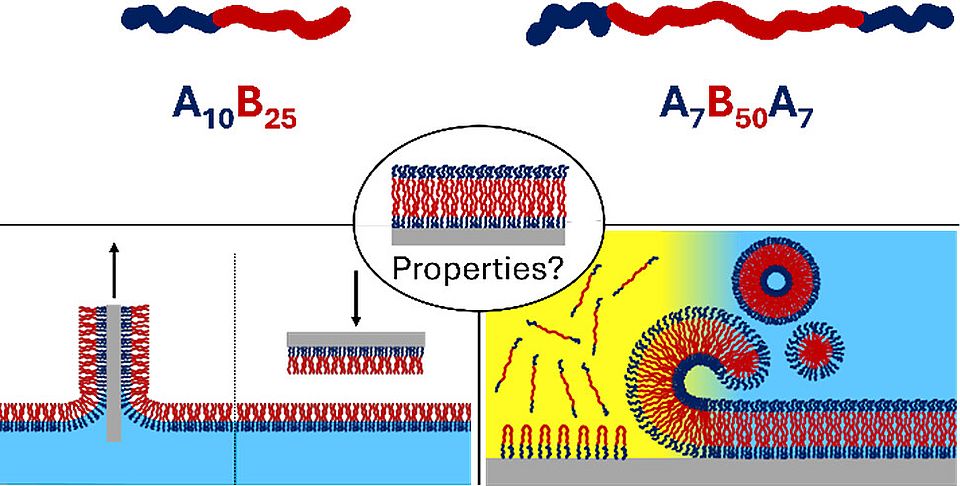
Solid-Supported Polymer Membranes: How Different Deposition Methods Influence Their Inner Morphology and Properties
M. S. Muthwill, M. Kraus, M. Bina, M. Malekovic, I. A. Dinu, C. G. Palivan
Langmuir 2025, DOI: 10.1021/acs.langmuir.5c00105
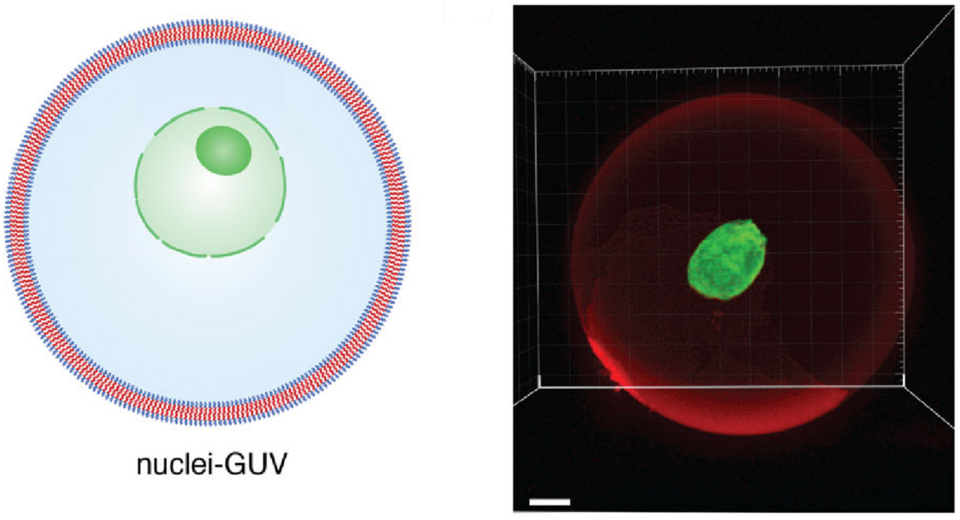
Polymeric Giant Unilamellar Vesicles Support Longevity of Native Nuclei in Protocells
L. Heuberger, A. Balestri, S. Tarvirdipour, L. E. Kapinos, R. Y. H. Lim, E. Lörtscher, C.-A. Schoenenberger, C. G. Palivan
Small Science 2025, DOI: 10.1002/smsc.202400622
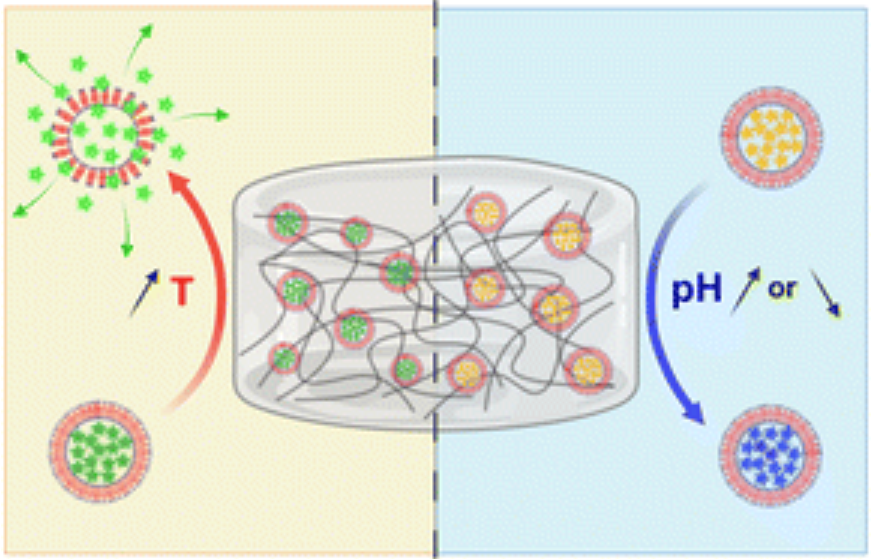
Hydrogel-polymersome composites as a sensing platform for monitoring food spoilage
C. M. John, E. C. dos Santos, R. P. Wehr, D. Messmer, C. G. Palivan, I. A. Dinu
Nanoscale 2025, DOI: 10.1039/D4NR05177G
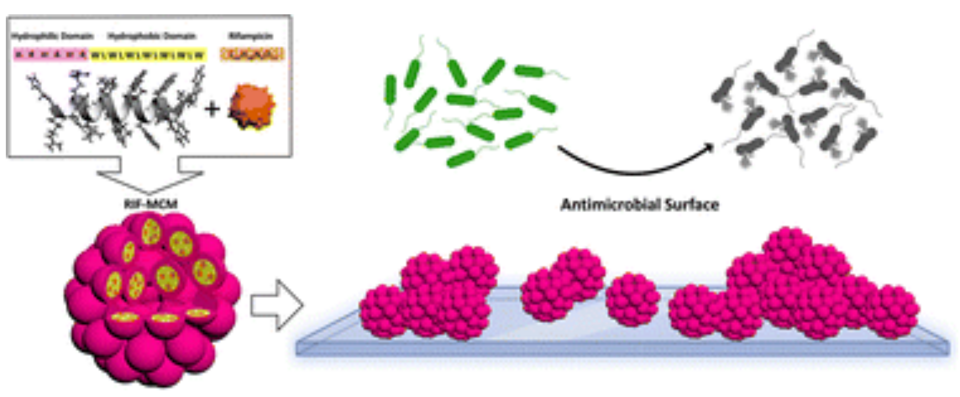
Enhanced antimicrobial protection through surface immobilization of antibiotic-loaded peptide multicompartment micelles
S. Tarvirdipour, S. N. Abdollahi, J. Köser, M. Bina, C.-A. Schoenenberger, C. G. Palivan
J. Mater. Chem. B 2025, DOI: 10.1039/D5TB00246J
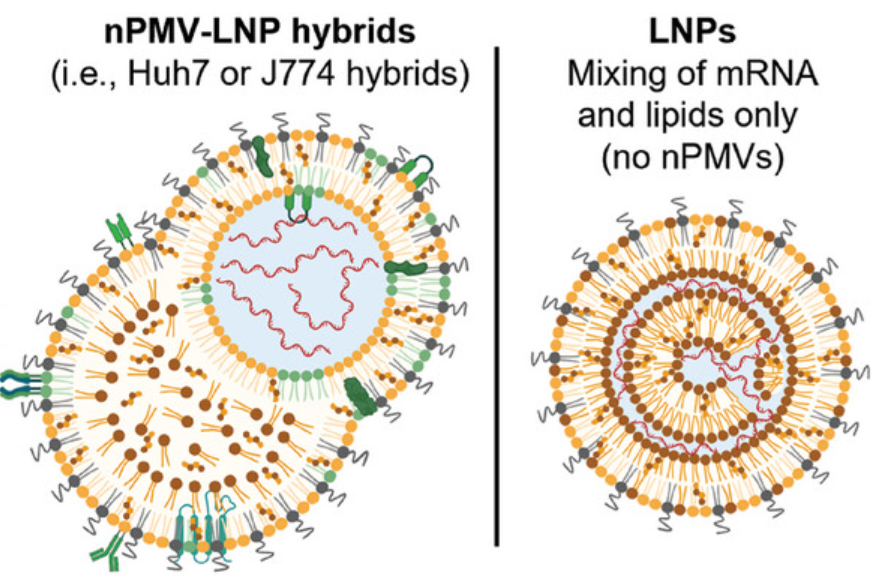
Nano Plasma Membrane Vesicle-Lipid Nanoparticle Hybrids for Enhanced Gene Delivery and Expression
C. L. Alter, C. Lotter, R. D. Puligilla, J. S. Bolten, J. Sedzicki, J. Marchese, V. Schittny, F. Rucci, M. Beverly, C. G. Palivan, P. Detampel, T. Einfalt, J. Huwyler
Advanced Healthcare Materials 2024, DOI: 10.1002/adhm.202401888

Thermoresponsive Nanocarriers Transduced by Inorganic Nanoparticles: Design Considerations and Applications in Drug Delivery
A. Nikoletić, M. Maleković, G. Kozalak, C. G. Palivan, O. Tagit
Helvetica Chimica Acta 2025, DOI: 10.1002/hlca.202400193

Photoreceptor-Like Signal Transduction Between Polymer-Based Protocells
L. Heuberger, M. Korpidou, A. Guinart, D. Doellerer, D. M. López, C.-A. Schoenenberger, D. Milinković, E. Lörtscher, B. L. Feringa, C. G. Palivan
Advanced Materials 2024, DOI: 10.1002/adma.202413981

Hybrid Planar Copolymer Membranes with Dual Functionality against Bacteria Growth
M. Bina, J. P. Coats, M. Skowicki, M. Maleković, V. Mihali, C. G. Palivan
Langmuir 2024, DOI: 10.1021/acs.langmuir.4c02110

Controlled enzymatic reactions by programmed confinement in clusters of polymersomes and Janus nanoparticles
V. Mihali, P. Jasko, M. Skowicki, C. G. Palivan
Materials Today 2024, DOI: 10.1016/j.mattod.2024.08.020

Redefining drug therapy: innovative approaches using catalytic compartments
Y. L. Mustafa, A. Balestri, X. Huang, C. G. Palivan
Expert Opinion on Drug Delivery 2024, DOI: 10.1080/17425247.2024.2403476

Stimuli-Responsive Prototissues via DNA-Mediated Self-Assembly of Polymer Giant Unilamellar Vesicles
X. Huang, M. Skowicki, I. A. Dinu, C.-A. Schoenenberger, C. G. Palivan
Advanced Functional Materials 2024, DOI: 10.1002/adfm.202408373

C. G. Palivan, L. Heuberger, J. Gaitzsch, B. Voit, D. Appelhans, B. B. Fernandes, G. Battaglia, J. Du, L. Abdelmohsen, J. C. M. van Hest, J. Hu, S. Liu, Z. Zhong, H. Sun, A. Mutschler, S. Lecommandoux
Biomacromolecules 2024, DOI: 10.1021/acs.biomac.4c00769

M. Korpidou, J. Becker, S. Tarvirdipour, I. A. Dinu, C. R. Becer, C. G. Palivan
Biomacromolecules 2024, DOI: 10.1021/acs.biomac.4c00526

Nanoassemblies designed for efficient nuclear targeting
M. Skowicki, S. Tarvirdipour, M. Kraus, C.-A. Schoenenberger, C. G. Palivan
Adv. Drug Deliv. Rev. 2024, DOI: 10.1016/j.addr.2024.115354

Tweaking the NRF2 signaling cascade in human myelogenous leukemia cells by artificial nano-organelles
K. M. P. Wolf, V. Maffeis, C.-A. Schoenenberger, T. Zünd, L. Bar-Peled, C. G. Palivan, V. Vogel
PNAS 2024, DOI: 10.1073/pnas.221947012

High-Throughput Silica Nanoparticle Detection for Quality Control of Complex Early Life Nutrition Food Matrices
V. Maffeis, A. Otter, A. Düsterloh, L. Kind, C. Palivan, S.S. Saxer
ACS Omega 2024, DOI: 10.1021/acsomega.3c09459

Advancing the Design of Artificial Nano-organelles for Targeted Cellular Detoxification of Reactive Oxygen Species
V. Maffeis, M. Skowicki, K. M. P. Wolf, M. Chami, C.-A. Schoenenberger, V. Vogel, C. G. Palivan
Nano Letters 2024, DOI: 10.1021/acs.nanolett.3c03888
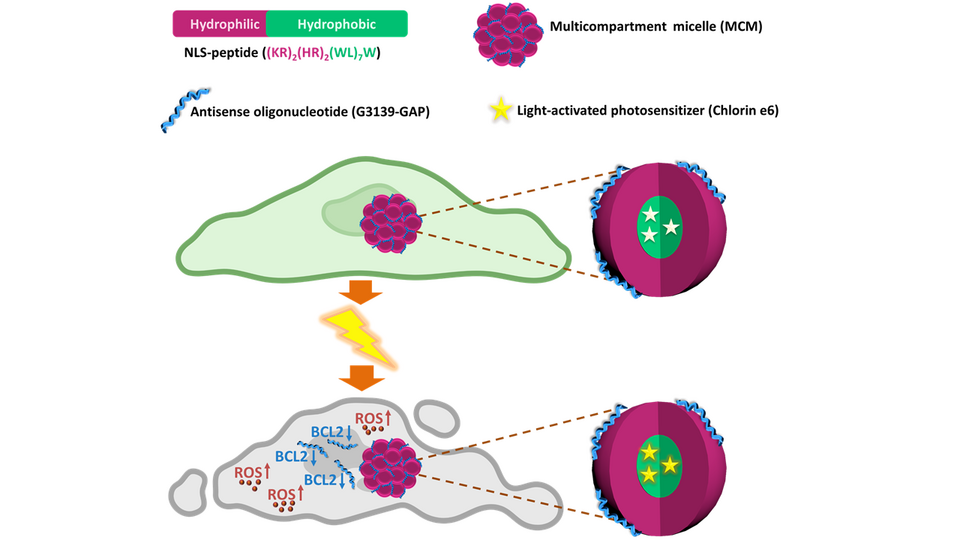
Peptide nanocarriers co-delivering an antisense oligonucleotide and photosensitizer elicit synergistic cytotoxicity
S. Tarvirdipour, M. Skowicki, V. Maffeis, S. N. Abdollahi, C.-A. Schoenenberger, C. G. Palivan
J. Colloid Interface Sci. 2024, DOI: 10.1016/j.jcis.2024.03.021
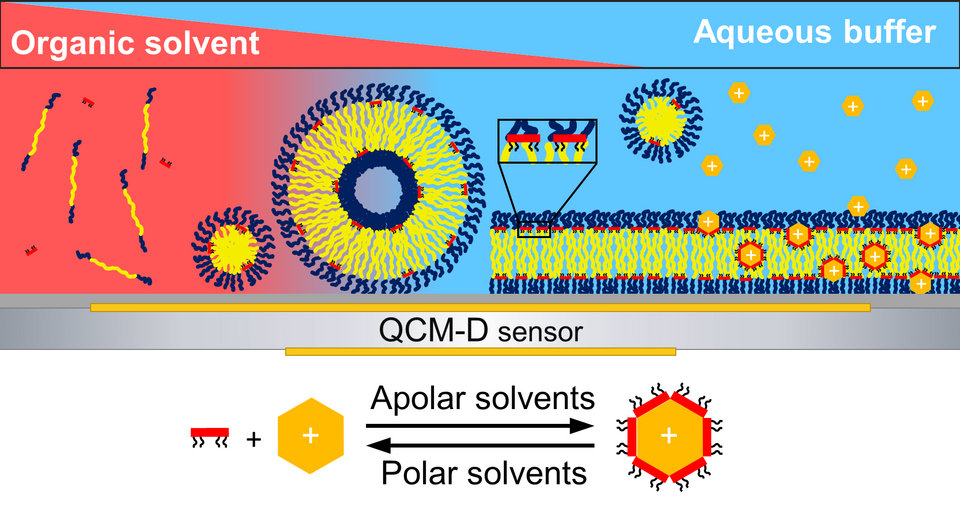
Planar Polymer Membranes Accommodate Functional Self-Assembly of Inserted Resorcinarene Nanocapsules
M.S. Muthwill, M. Bina, N. Paracini, J.P. Coats, S. Merget, S. Yorulmaz Avsar, D. Messmer, K. Tiefenbacher, and C.G. Palivan
ACS Applied Materials & Interfaces 2024, DOI: 10.1021/acsami.3c18687

FAP Targeting of Photosensitizer-Loaded Polymersomes for Increased Light-Activated Cell Killing
M. Skowicki, D. Hürlimann, S. Tarvirdipour, M. Kyropoulou, C.-A. Schoenenberger, S. Gerber-Lemaire, C. G. Palivan
Biomacromolecules 2024, DOI: 10.1021/acs.biomac.3c00943
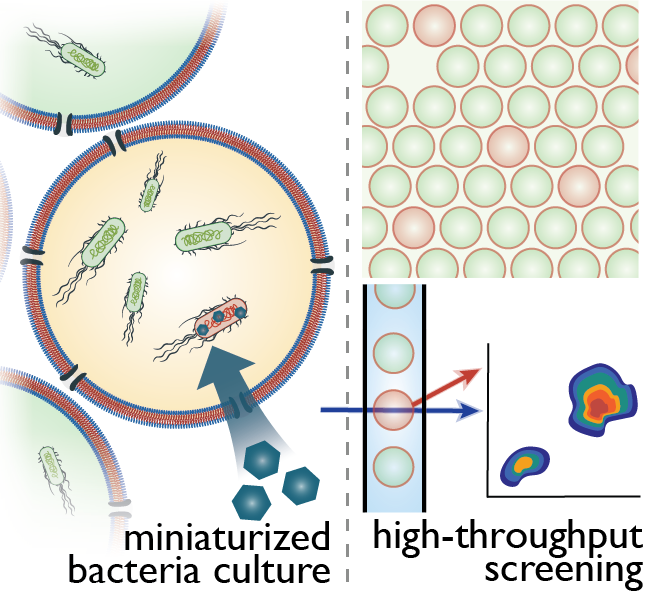
Microfluidic Giant Polymer Vesicles Equipped with Biopores for High‐Throughput Screening of Bacteria
Heuberger, L.; Messmer, D.; Dos Santos, E. C.; Scherrer, D.; Lörtscher, E.; Schoenenberger, C.; Palivan, C. G. Advanced Science 2023, 2307103. DOI: 10.1002/advs.202307103
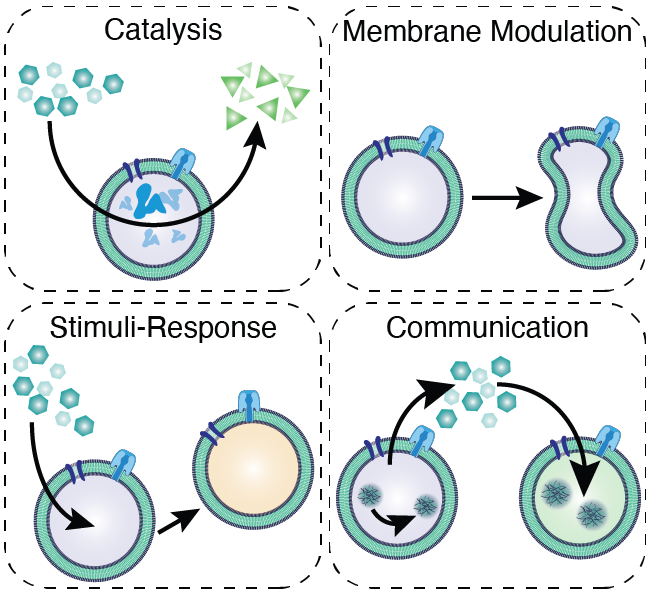
Synthetic Cells Revisited: Artificial Cells Construction Using Polymeric Building Blocks
V. Maffeis, L. Heuberger, A. Nikoletić, C.-A. Schoenenberger, C. G. Palivan
Adv. Sci.2023, 2305837. DOI: 10.1002/advs.202305837
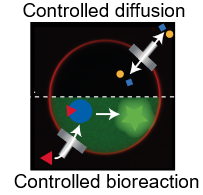
Polymeric Giant Unilamellar Vesicles with Integrated DNA-Origami Nanopores: An Efficient Platform for Tuning Bioreaction Dynamics Through Controlled Molecular Diffusion
R. Cochereau, V. Maffeis, E. C. dos Santos, E. Lörtscher, C. G. Palivan
Advanced Functional Materials, 2023 , p.2304782, DOI: 10.1002/adfm.202304782






